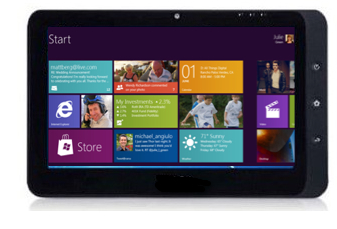Microsoft gets specific about Windows on ARM, or Windows Lite


WOA, as in woa is mea, my apps don't work, will only be distributed through the purchase of new hardware. There will be no user installs of WOA, it must be preinstalled by the vendor. This makes sense given the OS is basically a firmware image on ARM-based equipment.
Sinofsky answered a big question about whether Windows 8 desktop apps will run on the ARM platform. That is a resounding no. The only desktop apps outside of system apps that will run on WOA systems are Word, Excel, Powerpoint, and OneNote. These are special versions for WOA tweaked for good battery performance on tablets and other mobile devices.
WOA includes desktop versions of the new Microsoft Word, Excel, PowerPoint, and OneNote. These new Office applications, codenamed “Office 15”, have been significantly architected for both touch and minimized power/resource consumption, while also being fully-featured for consumers and providing complete document compatibility. WOA supports the Windows desktop experience including File Explorer, Internet Explorer 10 for the desktop, and most other intrinsic Windows desktop features—which have been significantly architected for both touch and minimized power/resource consumption.
While Microsoft is stating that the Windows 8 desktop is alive and well in WOA, it only means system functions such as File Explorer. No existing legacy user apps will run in WOA, and it's not possible to port them to the new environment.
WOA does not support running, emulating, or porting existing x86/64 desktop apps.
The only way for users to get WOA apps and device drivers will be through the Microsoft Store or Microsoft/Windows Update. While not specifically stating it is forbidden, this would imply that users will not be able to sideload apps obtained through other sources. I am trying to get clarification from Microsoft on this.
WOA will support all new Metro apps, which as stated will be the only apps available on the ARM version of Windows. Microsoft is obviously planning on developers to churn out a lot of apps quickly, which will be a good thing if true.
The web browser in WOA will be based on Internet Explorer 10, and will not run Flash. The cancellation of Flash mobile by Adobe has every vendor reconsidering whether to even support it in new products, and Microsoft has chosen to avoid it.
With WOA only coming with device purchases, it is assumed Microsoft will keep updating the OS forever, right? This statement from Sinofsky leads us to hope that is the case, at least for a while. It sort of depends on whether Microsoft views the useful lifetime of the PC to be the same as the consumer.
Over the useful lifetime of the PC, the provided software will be serviced and improved.
A good takeaway from all of this new detail about WOA is that Microsoft has approached it to be a new hardware/software approach from the ground up. The new hardware will have a new OS and totally new apps designed to take full advantage of that environment. Since this is a totally new platform, it leads me to wonder why it had to be tagged with the Windows 8 moniker. It seems like a flashier name would be more fitting in the market. WOA just conjures up a sad mental image.
Since WOA is only distributed through hardware vendors Microsoft will make special non-retail hardware available with WOA for developers and vendors to preview. This will likely start happening at the end of this month when the Consumer Preview of Windows 8 on x86 will be available.
Related coverage:
- Windows 8 Consumer Preview due February 29: Why it's not called beta
- iPad 2 as serious writing machine (how-to)
- ASUS Transformer Prime: The Android tablet to rule them all
- Color me surprised. I am 90 percent post-PC
- iPad 2 keyboard case shootout
- Logitech fold-up keyboard for iPad 2: Full-sized, full featured (review)
- Why I bought an iPad 2
- HP TouchPad: Everything you want to know
- Review: Motorola XOOM, brimming with unrealized potential
- Hands-on review: Samsung Galaxy Tab 10.1
- Hands on with first 7-inch Honeycomb tablet: Acer A100
- Lenovo IdeaPad K1 tablet: First impressions
- ThinkPad Tablet: Ready for the boardroom
- ThinkPad Tablet vs. Samsung Galaxy Tab 10.1 as laptop replacement